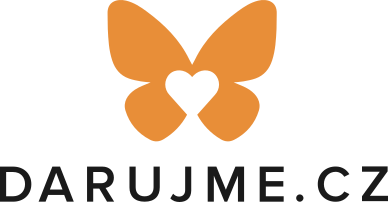Physical activity
Insufficient physical activity increases the risk of premature death by 20–30%. Yet, more than 25% of adults and 80% of adolescents are physically inactive. Find an activity you like and do it regularly. You’ll prevent various diseases’ development, including mental illnesses.
Benefits
Physical activity decreases the risk of:
Physical activity:
1. Maintains a healthy weight – increases the amount of energy expenditure; therefore, helps maintain optimal weight or reduce overweight and obesity. In addition, it also impacts the appearance and boosts self-confidence.
2. Prevents various diseases:
- Increases HDL levels (the good cholesterol) and decreases triglyceride (the bad fats) levels in the blood 👩🎓
- Trains the heart and lowers blood pressure 👩🎓
- Reduces anxiety and depression 👩🎓
-
Increases tissue sensitivity to insulin; prevents diabetes👩🎓
- Decreases the risk of cancer 👩🎓
- Strengthens our bones, maintains the necessary movement in joints, helps prevent osteoporosis, thus, falling 👩🎓
- Improves immunity response 👩🎓
3. Boosts your mood – exercise releases endorphins (happy hormones) in the brain 👩🎓
4. Makes you sleep better – regular exercise helps you fall asleep faster and makes the sleep deeper and a good quality one 👩🎓
5. It’s a fantastic way to spend time with your family and friends or meet new people.
How to start?
You can start whenever, even during senior years. How to start doing sports regularly?
- Make exercise the first task on your to-do list. Do it right in the morning so nothing can come up later.
- Don’t exercise alone. What about your dog? It needs to exercise as well. Don’t have a dog? Ask your friend. Arranged exercise is worse to abandon when someone’s waiting for you. You can motivate each other.
- Make the exercise a thing on the calendar. Determine a stable place for it in your schedule and take it as a high-priority appointment.
- If you can, add exercise to the way to/from work. Ride a bike, run or walk.
- Are you not enjoying it? Then don’t do it! Choose a sport you’ll like. It’s easier to stick to it.
- It won’t be perfect every day, and some days it’s harder to force yourself to do it. Remember that every minute counts. A short walk is better than nothing.
- Set achievable goals. You don’t run, but you want to run a marathon? Start off with small goals – 3/5/10 km. You’re more likely to reach it and motivate yourself to set more goals.
How much exercise is enough?
A healthy adult should exercise moderately at least 5 times a week for 30 minutes; or heavy for 75 minutes weekly.
What does that mean? Power walk for 30 minutes 5 times a week; or go for a run 3 times a week or engage in any heavy exercise for 25 minutes. Double the time benefits our health – 60 minutes 5 times a week.
Children should engage in physical activities adequately, diversely and amusingly. Shorter periods of moderate to heavy physical activity are better for them – one hour a day.
When is the time to consult your doctor about exercise and its intensity? If you’re over 35 and your or someone in your family suffers from cardiovascular disease.
What exercise intensity should I do?
What’s the difference between moderate and heavy physical activity intensity? It’s necessary to do a stress test. For starters, we can apply these simple rules:
- You can say three words continuously without gasping for breath while doing a moderate activity
- You wouldn’t be able to do it during heavy exercise.
- If you can sing during the activity, the intensity is too light.
- If you can’t say a word, it’s too heavy.
Examples of exercises’ intensity:
- Light: walking, regular house chores, riding a bike in town.
- Moderate: power walking, more challenging house chores and work, walking fast, jogging. Fast bike riding, scooter riding, conditioning exercises, recreational sports (basketball, tennis, table tennis, ice/roller skating, skiing, cross-country skiing, short-distance swimming, aerobics, etc.).
- Heavy: running, hard manual jobs (loggers, builders, etc.), intensive bike riding, running (marathons, terrain), competitive/high-performance sports.
Aerobic exercises
Also known as endurance activities or cardio are exercises that we can perform longer because of sufficient muscle oxygen supply. The body uses two energy sources – sugar and fat – during aerobic exercises. Sugar is in the form of glycogen and is placed in the liver and muscles, serving as an immediate energy source. The body prefers it to fat, and fat becomes a source of energy after 30 minutes of the activity. Our current condition determines the effectiveness of our body’s ability to burn fat.
Measuring your heart rate is not essential. Just perform the activity to sweat but be able to talk. If you really want to know your heart rate, you have to know your maximum heart rate. Use this formula:
208 - (0,7 × age)
The result is orientational. You have to do stress tests to determine the heart rate, and the formula doesn’t work on children.
What heart rate should I stick to? Common sense plays an important role – start with light intensity and increase it gradually.
- Beginners and people with a cardiovascular limitation: Start off with 50% of maximum heart rate activity and increase it gradually up to 75%.
- To burn fat: 55–75% maximum heart rate.
- High intensity: 75–90%.
If you experience stinging chest pain, stop doing the activity and call your GP. If the pain persists even after ceasing the training, call 155 (Czech).
Anaerobic exercises
These are high-intensity short-time activities in which muscles work on so-called oxygen debt. Such activities include resistance training, sprint or HIIT (high-intensity interval training).
Resistance training
What impact does it have? Thanks to it, muscles grow and use more energy. Muscle growth depends on testosterone levels, so women don’t have to fear their muscles will grow too much. Bones strengthen because minerals and nutrients are passed through. These exercises also improve posture. The muscles burn the energy up to 48 hours after the movement, thanks to resistance training, unlike aerobic exercises. Muscles use more energy than fat tissue, which is an advantage – so the more muscle mass we have, the more energy the body uses.
What are the options?
- Bodyweight exercises: you won’t need any equipment and can do it at home. We’re talking about squats, press-ups, lunges or planks.
- Resistance bands training: can be purchased at any sports equipment store, and it’s a band increasing resistance and making the exercise harder. You can do it anywhere.
- Lifting weights and exercise machines are a part of resistance training too. You can try those at the gym.
Beware:
- Warm up before the activity with a power walk or run for 5–10 minutes. Unstretched muscles are more prone to injuries.
- Lift weights which you can repeatedly lift 12–15 times. Add more in time.
- Learn to do the exercise correctly. You’ll prevent injuries. If you’re unsure about the technique, get advice from a fitness trainer.
- Breathe regularly. Don’t hold in the breathing.
- Train all muscle groups evenly.
- Don’t skip resting.
- Don’t ignore the pain. If some exercise hurts, stop and try it in a few days with less weight and the correct technique.
- Don’t forget to stretch at the end.
Support online education about prevention
We want people to like prevention and make it a standard part of their lives. That’s why we create infographics, videos, articles or podcasts, which we post on Instagram, YouTube or our website. Help us educate online.
Support online education about prevention
We want people to like prevention and make it a standard part of their lives. That’s why we create infographics, videos, articles or podcasts, which we post on Instagram, YouTube or our website. Help us educate online.

